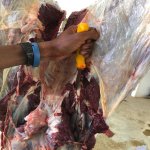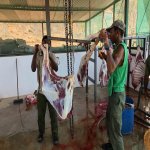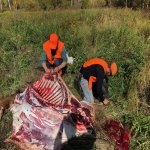I'm doing a canoe float trip for elk in northern BC in a couple weeks, we have pre floated the river, water volume looks good, lots of sign around. 3 guys, 3 boats, 30km of slow moving river in 10 days.
Plan is to float, stop and call every mile or so. When we find a good area set up camp till we want to move on. Take it nice and slow. We could be out in a day if we needed to be. Plan on packaging meat quarted in game bags, in bottom of canoe to keep cool. We are going fairly light for canoe camping. Individual tents, sill tarp kitchen set up. Looking for tips and tricks, things to bring.
Thanks for the advice.
Plan is to float, stop and call every mile or so. When we find a good area set up camp till we want to move on. Take it nice and slow. We could be out in a day if we needed to be. Plan on packaging meat quarted in game bags, in bottom of canoe to keep cool. We are going fairly light for canoe camping. Individual tents, sill tarp kitchen set up. Looking for tips and tricks, things to bring.
Thanks for the advice.









































































